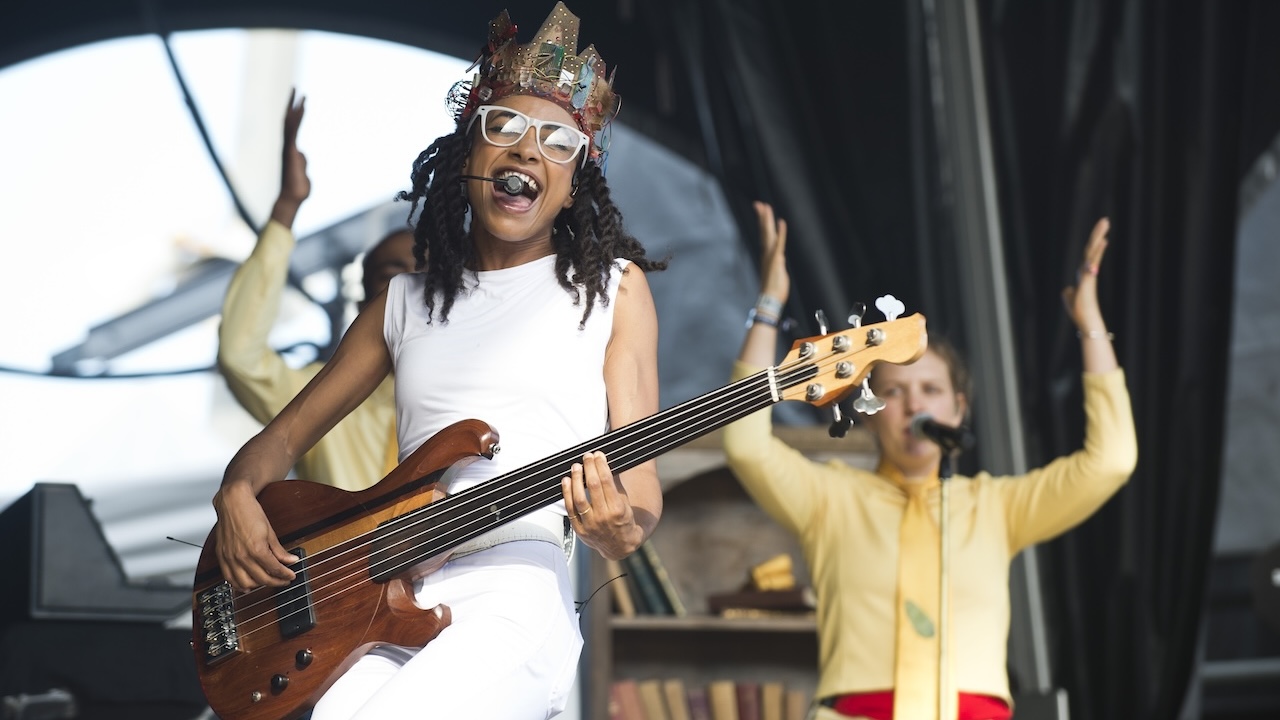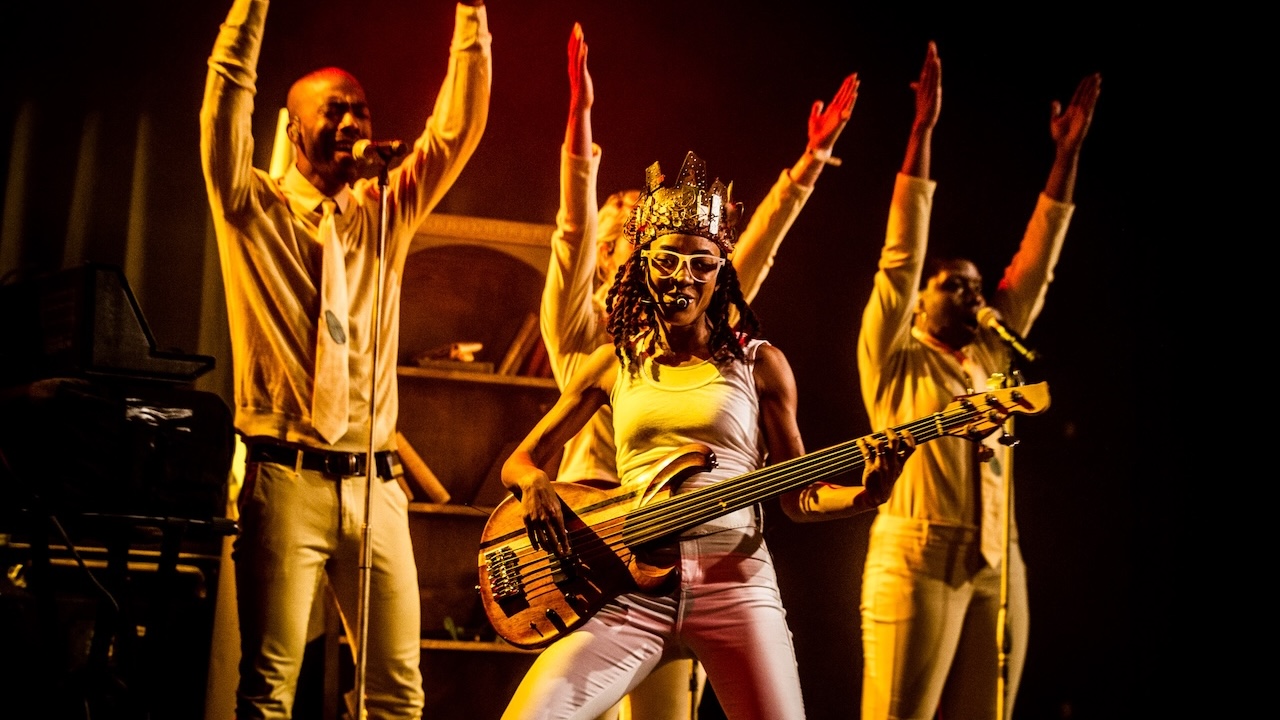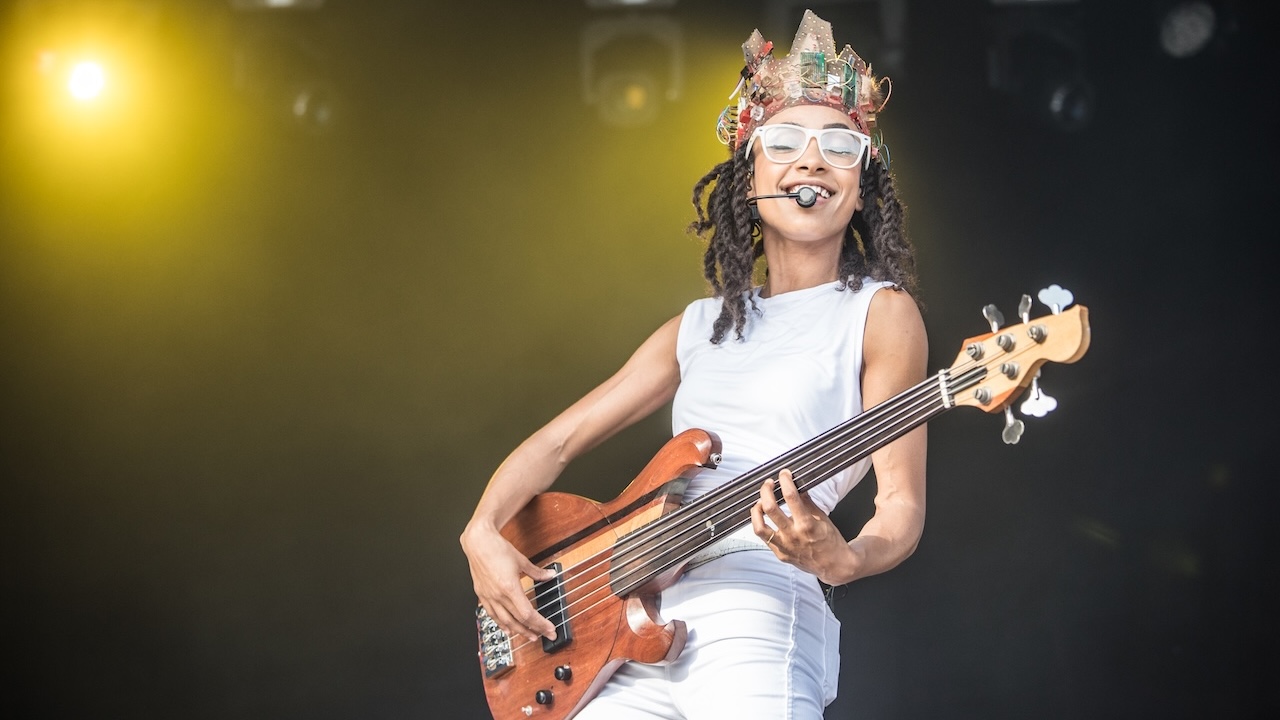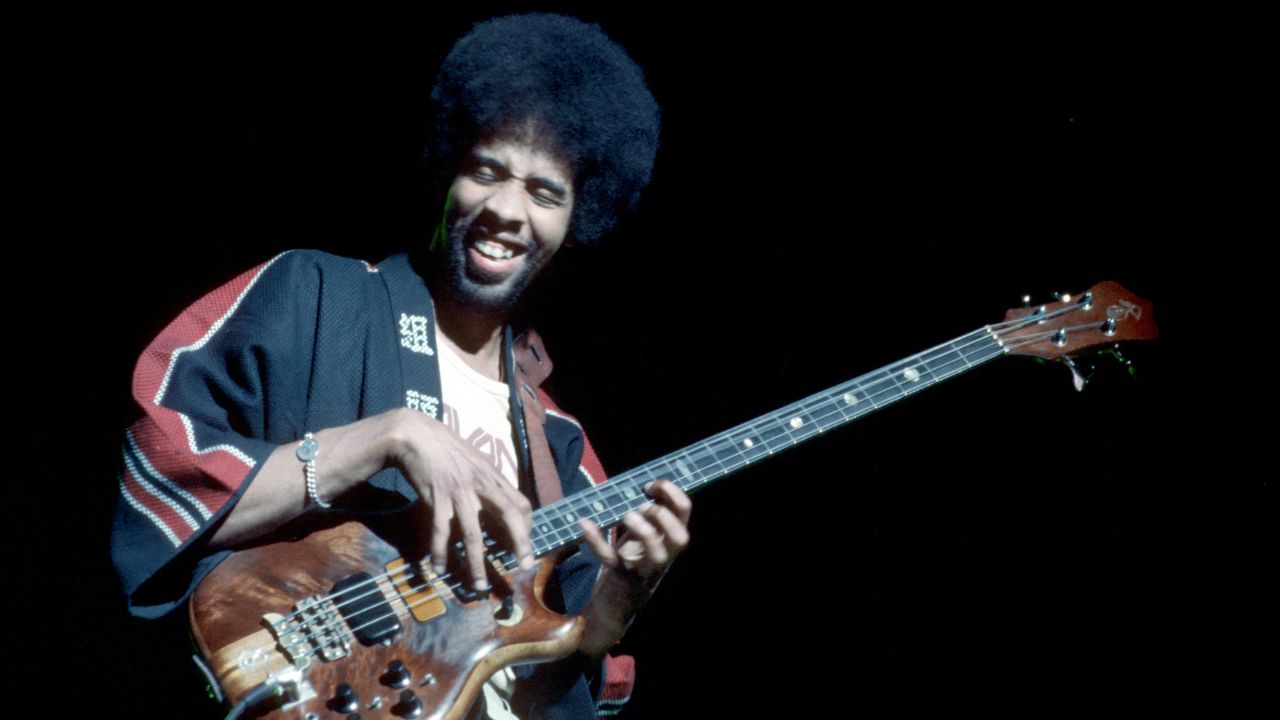“Even if you learn to play bass from YouTube videos, you’re still not self-taught. Autodidactic learning is awesome, but everyone needs a teacher”: How Esperanza Spalding created the most complex music of her career under the guidance of an alter ego
With help from producer Tony Visconti, one of the brightest stars of 21st century bass found a brand-new source of inspiration

It’s been said there are as many ways to write a song as there are songwriters. Some follow a strict regimen to invite the muse, while others depend on the harsh reality of deadlines and bills to inspire their creative process. Still others swear by long walks, prayer, yoga, or just the right psychedelics.
Emily, however, needs none of this. She knows exactly what moves her, and she knows how to get it: Complex chords, hard-hitting drums, multi-tracked vocals, shifting time signatures, loud guitars with overdrive, and theatricality are the things that rock her world, and when it's time to shine, Emily is happy to step up and wail. Oh, and by the way, she never, ever plays upright.
Fortunately for us, “Emily” is the alter ego and spirit guide of Esperanza Emily Spalding, the badass electric and upright bass ace who's also an agile singer in three languages and an inspired composer.

Emily's D+Evolution, the 2016 album Spalding manifested for Emily with help from producer Tony Visconti, was an abrupt departure from Spalding's contemporary jazz aesthetic, and signaled the arrival of a bold new voice.
“At the beginning of the project, I saw a distinct character – I don't even know if ‘character’ is the right word – knocking on the door, and I had to figure out what I was going to do,” said Spalding in the April 2016 issue of Bass Player.
“So Emily's D+Evolution is really about me as a composer, bass player, and singer, giving body and voice to this being who needs to say this stuff. I made myself available so that she could bring her sound and her thoughts into reality.”
What's the best way to tune into intuition and listen to a creative alter ego?
All the latest guitar news, interviews, lessons, reviews, deals and more, direct to your inbox!
“Practice listening and following through on what you interpret as the required action. I'm not trying to figure out what it means... I'm just doing it, and I guess I know when it's matching the image that I saw or the inspiration or instruction that I've been given.”
Did you put a lot of thought into developing complex harmonic elements?
“While the music and lyrics were being written and then rehearsed, I truly felt like I was trying to produce Emily's vision, not my own. So it's not like I was analyzing – ‘Oh, this chord sounds more Emily because of the #9’ – it's more like, ‘That's the sound that needs to be here,’ with Emily in mind.”
Was acoustic bass a consideration?
“Acoustic bass was not even on the radar. Acoustic bass is my thing, not Emily's. Emily plays bass guitar because she's loud. And it's not even about bass; I hope people forget there's even an instrument in her hand. She's here to sing and move and perform, which is why live I have vocalist Corey King playing keyboard bass on some songs.”
Do you write on bass?
“The only song written on bass for this album was Rest in Pleasure – everything else was written on piano. Later, when it came time to record those piano-written parts on bass, well, I'm a bass player, so I put the right lilt here, the right attack there. The music dictated what I needed to do.”
How did you connect with Tony Visconti, and what did he bring to the table?
“I had heard David Bowie's The Next Day, and was struck by the sound and the balance; you can hear everything, almost like you're in the room with the band. I saw that Tony produced it and I learned about his history with Bowie, so I reached out, and he agreed to work with me.
“By the time we got together, I had already recorded the album, but he made some sound painting and textural contributions, and he helped with the mix. More important, Tony believed in the music and provided moral support at a time when I was feeling a little insecure about the project and needed someone I trusted to affirm that it was worth doing.”
Your bassline on Funk the Fear stands out for your improvisational approach.
“That was the only song where I was just comping through the changes, aside from the one unison riff; the rest of the songs have written basslines. Funk the Fear is basically chords and a vibe.”
Some stories about you mention that you were self-taught before you went to Berklee in 2002.
“That's not true. When I first started playing violin, I didn't have a private teacher, but like any intelligent musician, I got a teacher, which is how I got better and ended up becoming concertmaster of that orchestra – I had an awesome teacher who really kicked me in the ass and wouldn't let me just do my thing.”
You began as a self-taught player ....
“There's really no such thing. Even if you learn to play bass from YouTube videos, you're still not self-taught. Autodidactic learning is awesome, but everyone needs a teacher. We need someone outside ourselves to see what we can't see.”

Who were some mentors that made a difference?
“My first teacher worked with me until I was good enough to audition for Portland State University. Fortunately, I got a scholarship to that program, where I studied with the late, great Ken Baldwin.
“Because of studying with Ken, I was good enough to audition for Berklee; I got a scholarship, and I studied with amazing bass players there – Bruce Gertz and John Lockwood and Herman Hampton, among others.”
You're big on transcribing as a tool for learning harmony and theory, too.
“Transcribing is great, and not just on bass. There are so many things you learn by getting in touch with how it was played, the energy that it was played with, and of course, the context. No excerpt from a book can give you the context for what was played and when it was played. That's part of the reason transcribing is so nourishing – you get a lot out of it. Even a little goes a long way.”
You must confirm your public display name before commenting
Please logout and then login again, you will then be prompted to enter your display name.



